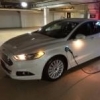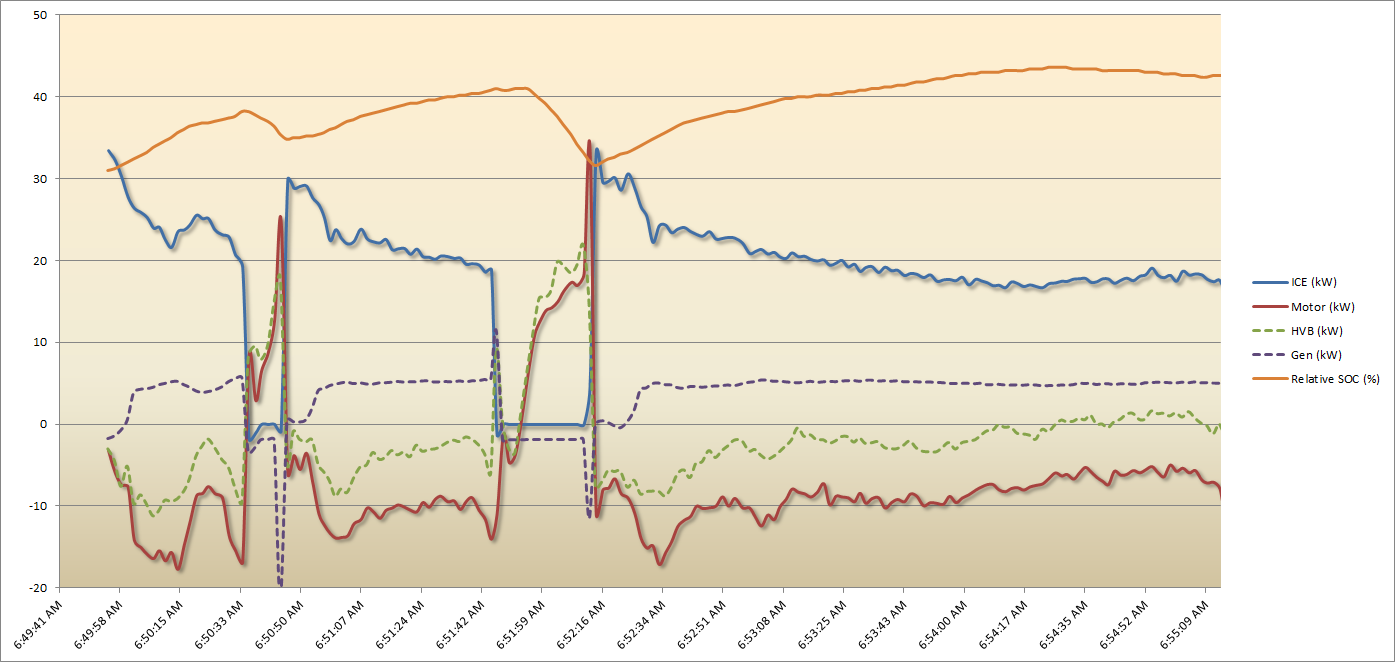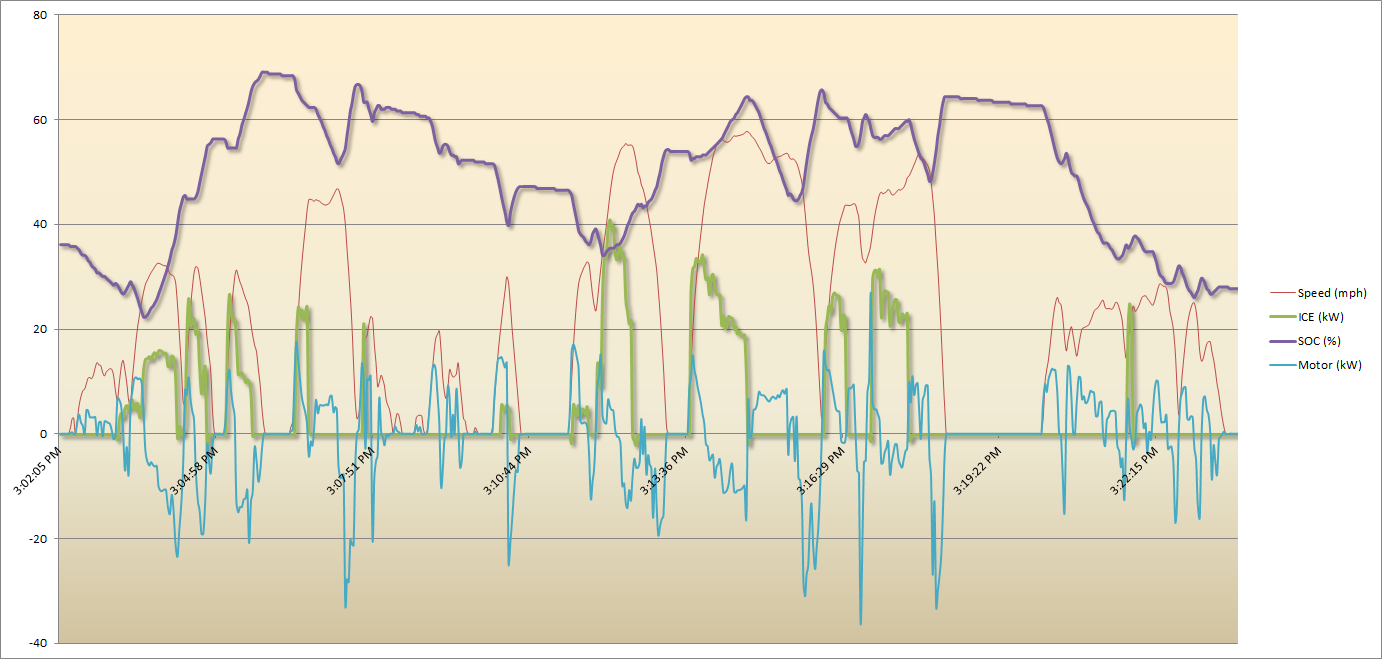Search the Community
Showing results for tags 'ICE'.
Found 11 results
-
Since I've got my '10 Fusion Hybrid back from the dealer (after the Takata airbag recall repair), I've noticed that it's impossible to run in EV mode unless I'm coasting to a stop or going downhill. Previously I could gradually accelerate to about 45 MPH using a very light foot and stay in EV mode the entire time, even cruising for a mile or so at that speed. My fuel economy is only down about 10%, 37 MPG vs. 40 MPG but it's frustrating to have the ICE kick in when it's unnecessary. Anyone else experience something similar?
-
My 2013 FFH, just yesterday out of nowhere, doesn't seem to be functioning properly. Mainly, the EV mode will only come on when coasting/braking for the most part. Basically any gas pedal input activates the ICE (internal combustion engine). Car has 170000km but was working fine in this regard up until yesterday. This has caused a fairly significant reduction in fuel economy. I read some stuff about a hybrid battery age counter needing reset but seems to only be for the 10-12 models. Also worth noting is the hybrid battery drained close to zero twice yesterday and that's also never happened. And when I turn the key off but leave accessory on, it now allows me to play music indefinitely whereas before it would typically only let me play it for a few mins and would then shut-off with a message on the touchscreen stating something about preserving the battery. And the "status" screen seems to be showing "charging" a lot more, even when in electric mode, when it's coasting it says charging as oppose to Electric drive. This may be normal and I just hadn't noticed before. Also at times, the idle when the gas engine kicks in can be quite rough, almost erratic like the RPM is going up and down, well, erratically. It also kind of shakes the car a bit at times too. Just generally not very smooth. Otherwise it seems to drive ok. Yesterday, it was really revving high then low very quickly, my wife was wondering what the heck was going on. I noticed there is an arrow either above or below the battery on the left dash screen. It appears to signify whether the battery is charging or discharging. In this case, the arrow seemed to bounce from top to bottom of the battery in sync with the revving. Check out this video I took this morning: https://photos.app.goo.gl/vtggfNHNTJ68aNp17 Thoughts on all this? Any help is greatly appreciated
- 3 replies
-
- internal combustion engine
- ice
-
(and 1 more)
Tagged with:
-

Switch from EV Auto To EV Later during Commute at 65 mph
larryh posted a gallery image in Member's Gallery
From the album: fusion
Switch from EV Auto to EV Later during 65 mph commute with charging of the HVB. -
From the album: fusion
Portion of my commute on the freeway traveling 65 mph.-
- Hybrid Mode
- HVB
-
(and 1 more)
Tagged with:
-
From the album: fusion
This plot shows Hybrid Mode operation during my 8 mile commute to work.-
- ICE
- Hybrid Mode
-
(and 1 more)
Tagged with:
-
I'd think that if the ABS system kicks in that you wouldn't get a 100% brake score. I would think that anytime the ABS kick on that you're not getting all your regen because the system pumps the brakes and I don't imagine that the electric motor can do that through regen. However, so far I have still gotten a 100% brake score every time I have had the ABS kick on both in our FFH and driving my parents' C-Max Energi the past few days. My next test will be to find a parking lot and engage the ABS while looking down at the ScanGauge amps flowing to the HVB to see if there is any interruption in current flow when the ABS kick on while still getting a 100% brake score. Has anyone else tested this?
-
I'm hoping to better understand how the FFH powertrain works with the power flow screens. Below is a pic with the different powertrain options of how the Toyota Hybrid Synergy Drive operates Engine & Motor drive for HSD appears to be Hybrid Drive on the Ford Power Flow screen as shown below This doesn't seem to be very common in the FFH. Here the FFH has blue flow from the battery to other, but aside from that the HVB is isolated. There is white flow from fuel to engine to drive and from engine to electric motor. There is blue flow from electric motor to drive. HSD's Engine Drive + Charge should be shown on the Power Flow screen as white flow from fuel to engine to drive. There should also be white flow from engine to electric motor. And then there should be blue flow going from electric motor to battery. In this scenario there would be no blue line connecting electric motor to drive. Has anyone seen this? I haven't yet. Granted, I've only driven a few hundred miles in the new FFH which has these screens and I do have to look at the road at least occasionally while driving, but I haven't seen this yet. Here's another set of Toyota powertrain options for HSD Engine & Motor drive + Charge should correspond to Charging HV Battery on the FFH Power Flow screen. Here you have blue flow from the electric motor to the battery. There is also blue flow from the electric motor to drive. There is white flow from fuel to engine to drive and from engine to electric motor. This seems to be one of the most common powertrain options chosen by the FFH computers. Another HSD option from the pic above is Full Power. This should correspond to Hybrid Drive on the FFH screen as shown below. In this scenario you have blue flow from battery to electric motor to drive, white flow from fuel to engine to drive and white flow from engine to electric motor. This is also known as assist because in this scenario the electric motor assists the ICE in accelerating or propelling the vehicle. In this scenario the ICE is on but is discharging. While the Toyota display doesn't differentiate MG1 & MG2 as in the graphics above, it does show enough arrows that you can discern what is happening with MG1 & MG2. Below is a pic of the different displays on the Toyota screen with the names of the powertrain modes that correspond to some of the aforementioned options. The FFH display also shows enough to infer their operation. One solid conclusion is that while the FFH powertrain doesn't have MG1, MG2 and the ICE on the same line like in the Toyota HSD system (click here for more info about how HSD is designed and operates), it works roughly the same. It seems that the FFH often runs the ICE both to power the wheels and to send electricity from MG1 to MG2 to power the wheels. I didn't know this before because our old FFH didn't have MFT and thus didn't have the Power Flow screen. Four questions arise from this. Does the FFH do an equivalent of HSD's Engine Drive + Charge? Why does the FFH not show Engine & Motor Drive (with the HVB isolated) as often as the Prius does? Will this have a negative impact on the FFH battery pack life? The Prius seems to very frequently show this mode. The FFH very rarely shows it. How will the HAH compare? Honda says that their ICE runs as a generator and isn't connected to the wheels. This would mean that its Power Flow screen would show white flow from fuel to engine and from engine to electric motor. There would also be blue flow from electric motor to drive. According to what Honda has published, the majority of the time in the HAH you wouldn't see white flow from engine to drive like we see in our cars. Has anyone seen their FFH display what is described in question 3 like Honda has said the HAH works? It doesn't appear that the Toyota system can operate this way because MG1, MG2 and the ICE are on the same line.
- 5 replies
-
- FFH
- power flow
- (and 6 more)
-
I'm curious for those owners with a ScanGauge or who use ET Mode what you see for coolant temps while driving. ptjones on the C-Max Forum determined that the grille shutters open at 190 F or 88 C. I have not seen our car get that warm. My first day with acdii's grille cover I think I saw the coolant temp hit 90 C, but recently it feels like the car has adapted because now I never see the coolant temp get above 84 C according to ET Mode in city or highway driving. Yesterday I left ET Mode on for more than the first half hour I was driving 65 MPH on the interstate to see how warm the ICE would get with the grille cover. The outside temp was 80 F and I was using A/C. The highest coolant temp was 84 C (183 F) and most of the time it stayed right at 83 C (181 F). I was surprised that even with the grille cover the ICE stayed so cool. This makes me wonder what other users see. I was debating taking the grille cover off for our road trip because of being concerned about ICE temps driving through the Rockies, but now I'm thinking that the ICE stays cool with it on and am wondering what would happen if I took it off. This makes me think that if I took it off the ICE would be even cooler...so I'm curious what others see for their coolant temp according to ET Mode or ScanGauge and if there's additional data that the ScanGauge can provide about this. Thanks!
- 11 replies
-
- coolant temp
- ICE
-
(and 1 more)
Tagged with:
-

Using L instead of D for faster ICE warmup
hybridbear posted a topic in Hybrid Driving Tips & Tricks
Has anyone tried using L instead of D for faster ICE warm-up? I realize I'm asking this question just as most of the country is no longer feeling the pains of winter, but since our weather still feels like February I figured I'd ask. I just tried doing this yesterday. I don't know what the impact will be on MPGs but the ICE definitely warms up faster and thus will shut off sooner. Here is an explanation of how L works for those who haven't tried it: L enables the hypermiling technique of DWB (Driving Without Brakes). As soon as you take your foot off the accelerator the car begins powerful regen. The ICE also does not shut off unless you come to a full stop. When accelerating the ICE revs much higher than is necessary to push extra electricity back into the battery. The ICE seems to rev to around 3000-3500 RPM when it would normally do 1500-2000 RPM in D. Yesterday and today on short trips I tried shifting the car into L as soon as the ICE came on the first time and using ET Mode to watch the coolant temp. Once the coolant temp showed about 35 C I shifted back into D and the ICE soon shut off. I was then able to drive the rest of the trip without engaging the ICE again. I have been able to get over 40 MPG doing this on my 1.3 mile drive to and from work yesterday and this morning. Both mornings were cold. Yesterday it was around 20 degrees in the morning and 32 in the afternoon and this morning was about 25 degrees. The MPG results from those few trips seem higher. My theory is that using L while accelerating will help improve mileage by allowing the ICE to turn off sooner and not waste gas while sitting at a red light waiting for the ICE to warm up enough to turn off. This could also help to get heat faster in the winter as well. Has anyone else tried this? What are your thoughts on potential benefits of using L? Will sustained use of L and higher revs on a cold engine do any long-term damage? Thanks- 20 replies
-
- improve MPG
- Max regen
-
(and 2 more)
Tagged with:
-
Here is an article from Edmunds about the future of the ICE and EVs. It is very heavily biased in favor of gasoline. http://www.edmunds.com/car-reviews/features/why-the-internal-combustion-engine-is-the-future.html This link is a critique of the Edmunds article by Green Car Reports. http://www.greencarreports.com/news/1083696_yes-combustion-engines-will-be-with-us-for-decades-howeve




